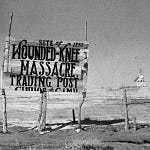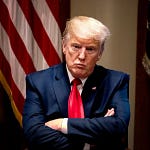This Day in Legal History: George Carlin’s Seven Dirty Words
On July 3, 1978, the United States Supreme Court issued a landmark First Amendment decision in FCC v. Pacifica Foundation, ruling 5-4 that the Federal Communications Commission (FCC) could reprimand a radio station for airing George Carlin’s infamous “Seven Dirty Words” comedy routine. The case arose after WBAI, a New York radio station, broadcast Carlin’s monologue during afternoon hours, prompting a listener complaint to the FCC. The FCC responded with a formal reprimand, sparking a legal battle over the boundaries of free speech and government regulation.
The Court held that the FCC had the authority to regulate indecent content on public airwaves, particularly during hours when children were likely to be listening. Justice John Paul Stevens, writing for the majority, emphasized the unique pervasiveness of broadcast media and its accessibility to minors as justification for the ruling. The decision marked one of the first times the Supreme Court allowed government regulation of speech based on content, outside of traditional obscenity laws.
Dissenting justices, including William Brennan and Thurgood Marshall, warned that the decision posed a threat to free expression and could chill controversial or creative speech. The ruling did not criminalize Carlin’s routine or ban such speech outright, but it set a precedent that the government could impose content-based restrictions on broadcasters without violating the First Amendment.
This case would come to define the limits of “indecent” speech in broadcast media for decades, reinforcing the idea that First Amendment protections are not absolute in all contexts. The decision became a cornerstone in the ongoing tension between free speech rights and government regulation of media.
Chief Justice John Roberts appeared to regain influence over the Supreme Court this term, joining the majority in 96% of argued cases—dissenting in only two of 58 decisions. Legal scholars, however, caution that this high rate doesn’t definitively prove Roberts is steering outcomes. Some suggest that his tendency to vote with the majority might reflect a strategic desire to maintain influence or unity, rather than genuine agreement.
Roberts, along with Justices Kavanaugh and Barrett, now forms a pivotal center bloc on the ideologically divided court, often determining case outcomes between the court’s conservative and liberal wings. These three justices were all in the majority for the ten most contentious 6-3 rulings this term, shaping major decisions on issues like LGBTQ curriculum, gender-affirming care, and administrative power.
Observers note that Roberts’ leadership this term was marked by a careful assignment of majority opinions, often to maintain consensus among conservatives. For example, he gave the opinion in Trump v. CASA to Barrett, whose more moderate reasoning helped avoid a fractured ruling. Notably, Roberts wrote no separate concurrences or dissents, reinforcing the view that he is trying to project cohesion.
However, consensus was not the norm this term. The court split significantly in one-third of its cases, and unanimous rulings fell to 43%. Many of the most ideologically charged outcomes favored conservatives, suggesting that even with Roberts at the center, the court remains deeply right-leaning. Additionally, significant decisions from the court’s emergency docket further indicate the direction of future jurisprudence.
Votes Suggest Chief Justice Regains Control of ‘Roberts Court’
A federal judge has blocked parts of a major restructuring of the U.S. Department of Health and Human Services (HHS) initiated by Secretary Robert F. Kennedy Jr., but the ruling does not require the reinstatement of fired workers. The decision in New York v. Kennedy found that 19 states and Washington, D.C. are likely to succeed in their claims that Kennedy’s reduction-in-force and reorganization—part of his “Make America Healthy Again” plan—were unlawful. The injunction halts further implementation but stops short of restoring the affected employees, leaving unresolved the harms states allege, including disrupted services and surveillance functions.
Legal experts point out the ambiguity in the ruling, noting it restricts further actions by HHS but does not mandate concrete remedies such as bringing employees back. Some warn that continuing to keep workers off the job could itself violate the injunction. The injunction is limited to four HHS divisions, not the full federal workforce affected.
The ruling requires HHS to file a compliance update by July 11 and address how the recent Supreme Court decision in Trump v. CASA—which limits the scope of national injunctions—may influence the outcome. HHS has multiple potential responses: appealing the ruling, waiting for developments in a related Supreme Court case, or restarting the process through proper legislative and budgetary channels.
RFK Jr.'s Overhaul of HHS Blocked But Workers Won’t Return Now
A federal judge has blocked President Donald Trump’s sweeping asylum ban at the U.S.-Mexico border, ruling that Trump exceeded his legal authority. U.S. District Judge Randolph Moss found that Trump’s January 2025 proclamation, which barred migrants deemed part of an “invasion” from seeking asylum, violated both federal immigration law and the Constitution. The 128-page opinion emphasized that neither Congress nor the Constitution gave the president power to bypass existing asylum laws, even in the face of immigration challenges.
The American Civil Liberties Union (ACLU) filed the lawsuit on behalf of advocacy groups and asylum seekers, arguing the ban contradicted U.S. and international legal standards. Moss’s ruling temporarily blocks enforcement of the policy and allows 14 days for the Trump administration to appeal. The decision applies broadly to a certified class of affected migrants, sidestepping recent Supreme Court limitations on national injunctions.
Trump’s policy built on but exceeded a similar effort by President Biden in 2024, which also faced judicial setbacks. The ruling marks another legal rebuke to Trump’s aggressive immigration stance since returning to office. The administration maintains the judge overstepped and vows to appeal. Meanwhile, civil liberties groups hail the decision as a necessary check on executive overreach and a reaffirmation of asylum protections.
US judge blocks Trump asylum ban at US-Mexico border, says he exceeded authority | Reuters
President Donald Trump has asked the U.S. Supreme Court to intervene in his effort to remove three Democratic members of the Consumer Product Safety Commission (CPSC), challenging a lower court’s ruling that blocked their dismissal. The commissioners—Mary Boyle, Alexander Hoehn-Saric, and Richard Trumka Jr.—were appointed by President Biden and make up the majority of the five-member board. They were fired in May, prompting a lawsuit that argued the president lacks authority to remove commissioners of independent agencies without cause.
A federal judge, Matthew Maddox, sided with the commissioners, stating Trump had overstepped his authority and finding no misconduct to justify their termination. The Justice Department claims Trump acted within his constitutional powers, asserting that the commissioners were obstructing his policy agenda. The administration is seeking to pause the reinstatement order while the case proceeds.
The 4th Circuit Court of Appeals declined to halt the lower court ruling, emphasizing that Congress lawfully limited presidential removal powers in this context. Trump’s team now wants the Supreme Court to override that decision, citing a recent high court ruling that allowed Trump to temporarily remove members of a federal labor board in a similar dispute.
This case adds to a growing list of legal battles testing the limits of executive power since Trump returned to office. It also raises broader constitutional questions about the balance of power between the president and independent regulatory agencies.
Trump asks Supreme Court to allow removal of consumer product safety commissioners | Reuters













